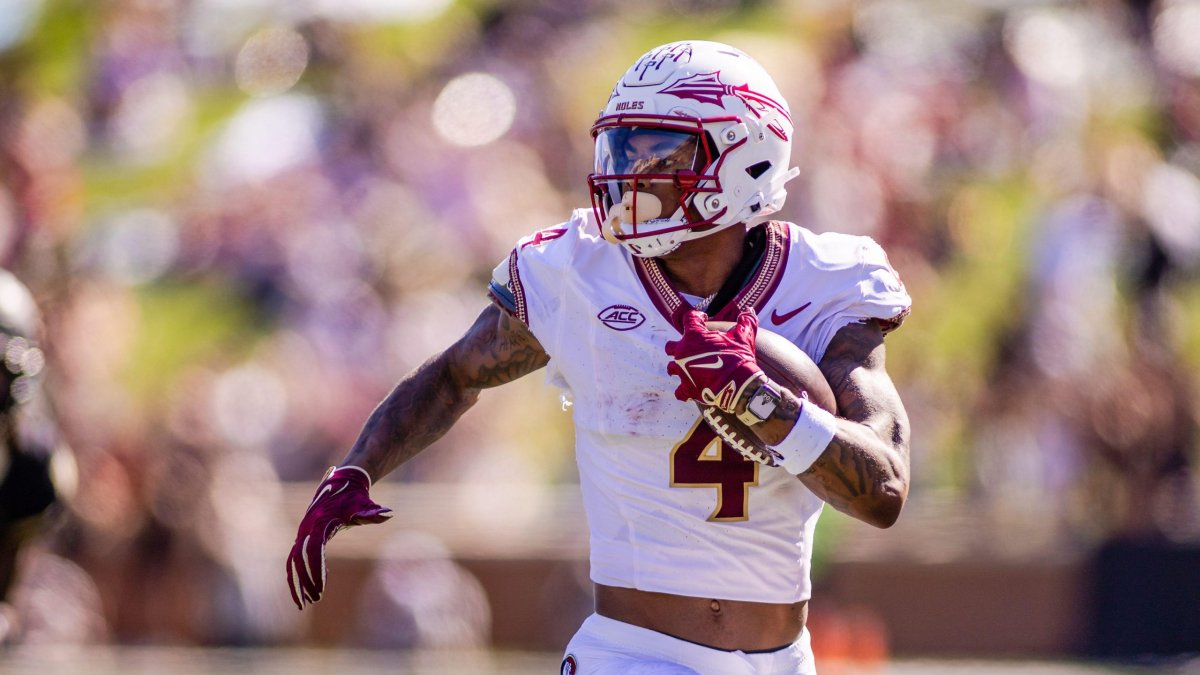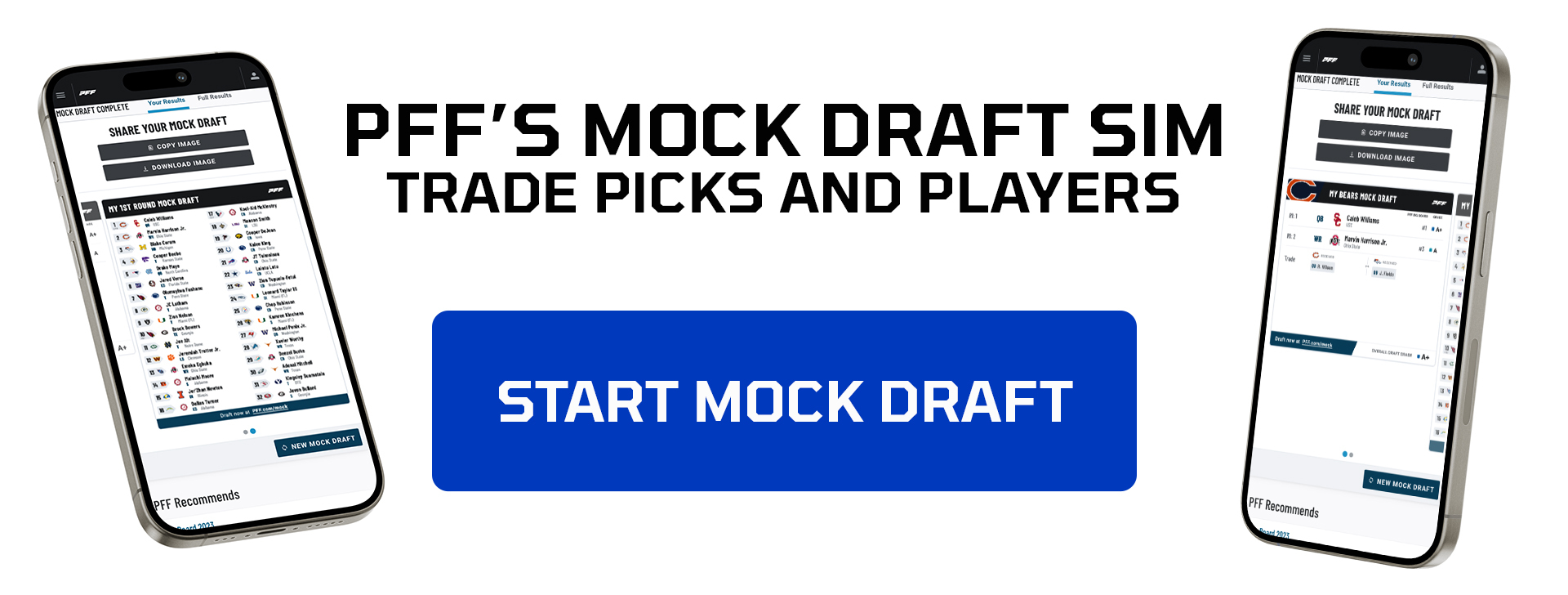The 2024 NFL Draft receiver class is going to be one for the ages. It may seem like a yearly statement at this point, and that’s true, but it reflects a true explosion of receiving talent entering the NFL rather than simply an acceleration of a hyperbolic draft narrative.
This class, headlined by Ohio State's Marvin Harrison Jr., features several elite receiver prospects who will be taken in the first round and many more who will make contributions.
One of the most fascinating and polarizing of them is Florida State’s Keon Coleman.
Listed at 6-foot-4 and 215 pounds, Coleman has prototypical NFL size and a highlight reel of the most spectacular catches in this draft class. But the consistency has never been there, and there are several red flags in his evaluation that are going to leave draft analysts, and NFL teams, all over the map on him.
The first red flag is that the opening line in his scouting report is likely to mention contested catches. Contested-catch skills are certainly not a bad thing, but it is an inherently volatile skill set and not something that can be relied upon every year. DeAndre Hopkins is one of the best contested catch receivers the NFL has seen over the past decade, and he caught only 22.7% of his contested targets in 2023.
If making contested catches is a part of your skill set, that’s great. If it’s the best thing you bring to the table? We might have a problem.
Coleman himself is evidence of that concern. He made some of the best contested catches you’ll ever see last season, but he caught only 33.3% of those opportunities, down almost half from his previous campaign at Michigan State.

The second red flag is that his production across the board has been middling at best, especially when compared to other top receiver prospects even just in this draft. Coleman recorded 1,467 yards and 19 touchdowns in his college career, most of which came over the past two seasons. LSU’s Malik Nabers had 1,545 yards and 14 touchdowns just this season.
His Florida State statistics are particularly rough relative to the other top prospects, but even including the year before doesn’t get him into the same ballpark. Coleman averaged 1.90 yards per route run for his college career. Nabers averaged 2.80, peaking a full yard higher than that in 2023. Marvin Harrison Jr. averaged 3.03 for his college career and Rome Odunze finished at 2.57 with a 3.09 peak this past season.
There is no real statistical case to be made that Coleman is an elite receiver prospect, and though college production carries a lot of weight, it doesn’t mean he can’t be a top receiver at the next level; it just means that he will be an outlier if he does pan out.
Chasing outliers can get teams into trouble at draft time, so if you are going to construct a case that Coleman’s lack of production should be overlooked, it had better have merit.

Luckily, I think there is a case to be made. Firstly, he is one of the youngest players in the draft. That doesn’t mean he will automatically be a better player going forward, but it’s logical to believe there is more potential development than if he had the same profile and production as a 22-year-old.
When I turned on his tape, I was immediately impressed and surprised by how suddenly he moved for a big receiver whose calling card was spectacular contested catches. He has route-running chops, and he has already shown significant growth in that area from the previous season at Michigan State. Though his stats and production were better for the Spartans, he was a vastly more nuanced player at Florida State. The difference between the two is largely a few more high-leverage plays went his way the year before.
That visible development in his route running and understanding of defenses and space from the year before is an encouraging sign, particularly paired with his age, in projecting his potential at the next level.
It’s also worth noting that Florida State’s offense was not a high-volume passing attack.
Seminoles quarterbacks combined for 3,300 yards on the season, lower than 16 individual passers in the FBS. Jordan Travis’ accuracy didn’t help the situation. He had a particularly high rate of catchable but inaccurate passes last season (26.2%), per PFF's charting, which helps explain the high drop rate of Florida State receivers (those not named Coleman). This was not an offense set up for receivers to look good, and while Coleman isn’t alone among prospects in that regard, it’s certainly something that was working against him.
Ultimately, Coleman is going to be a risky prospect — it’s not a flawless, clean profile — but the positives are obvious from his tape. He has spectacular ability, excellent size and quickness and more nuance in his route running than he is given credit for. His age is another plus factor. If he can run well in the 40, or his tracking data shows he has high-end game speed in place of that, he will do a lot to make a team take a chance that they can get a high-end player out of him.
It’s always an uncomfortable place to start with a player if you have to overlook their inability to produce on a lesser stage, but in Coleman’s case, it might be a valid part of the evaluation.





 © 2025 PFF - all rights reserved.
© 2025 PFF - all rights reserved.